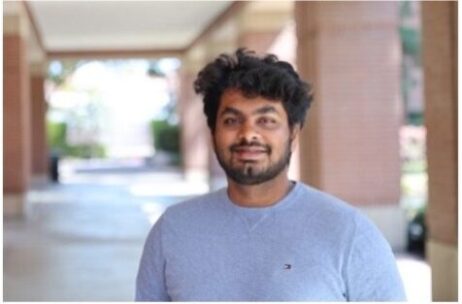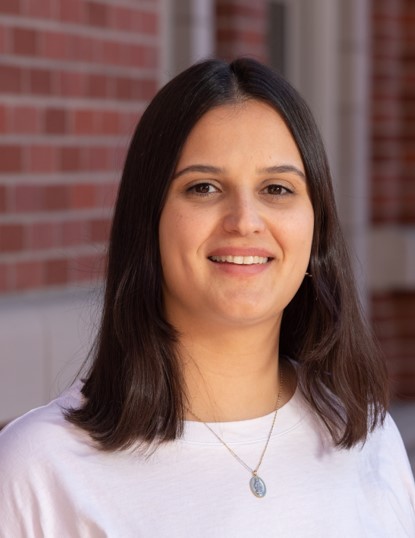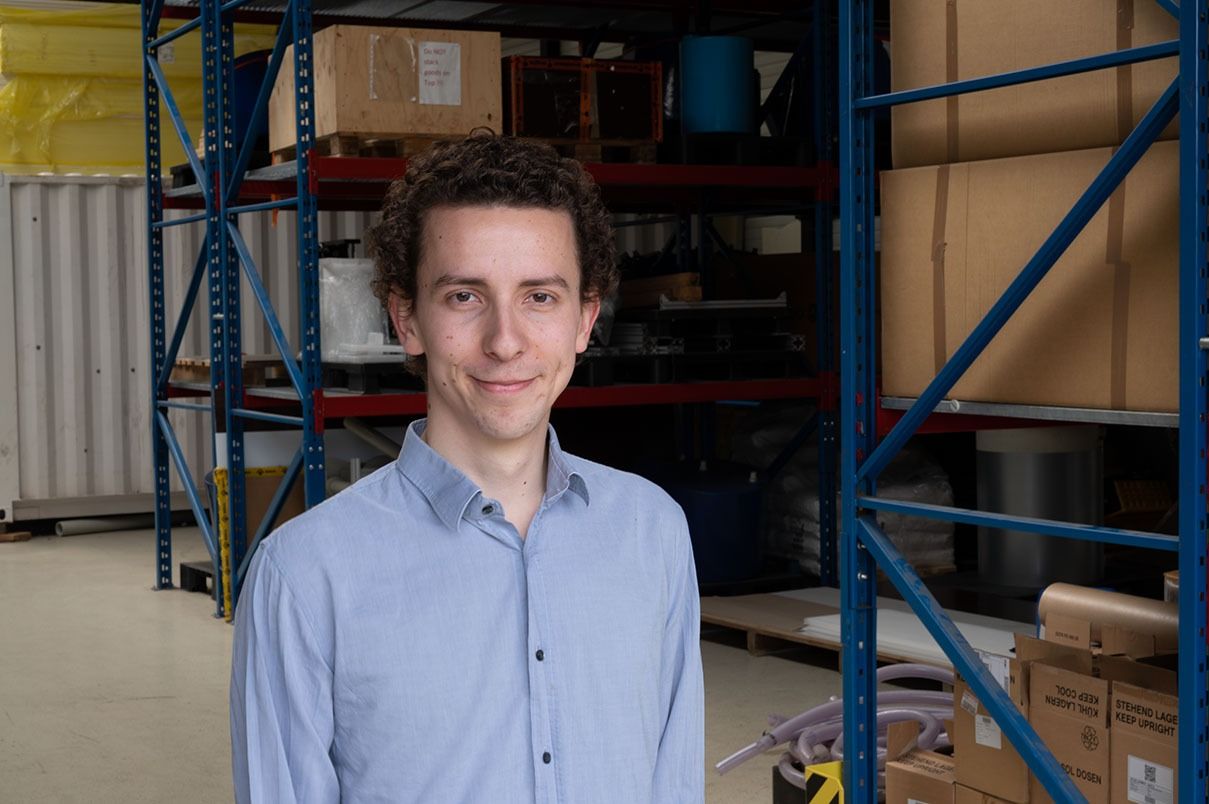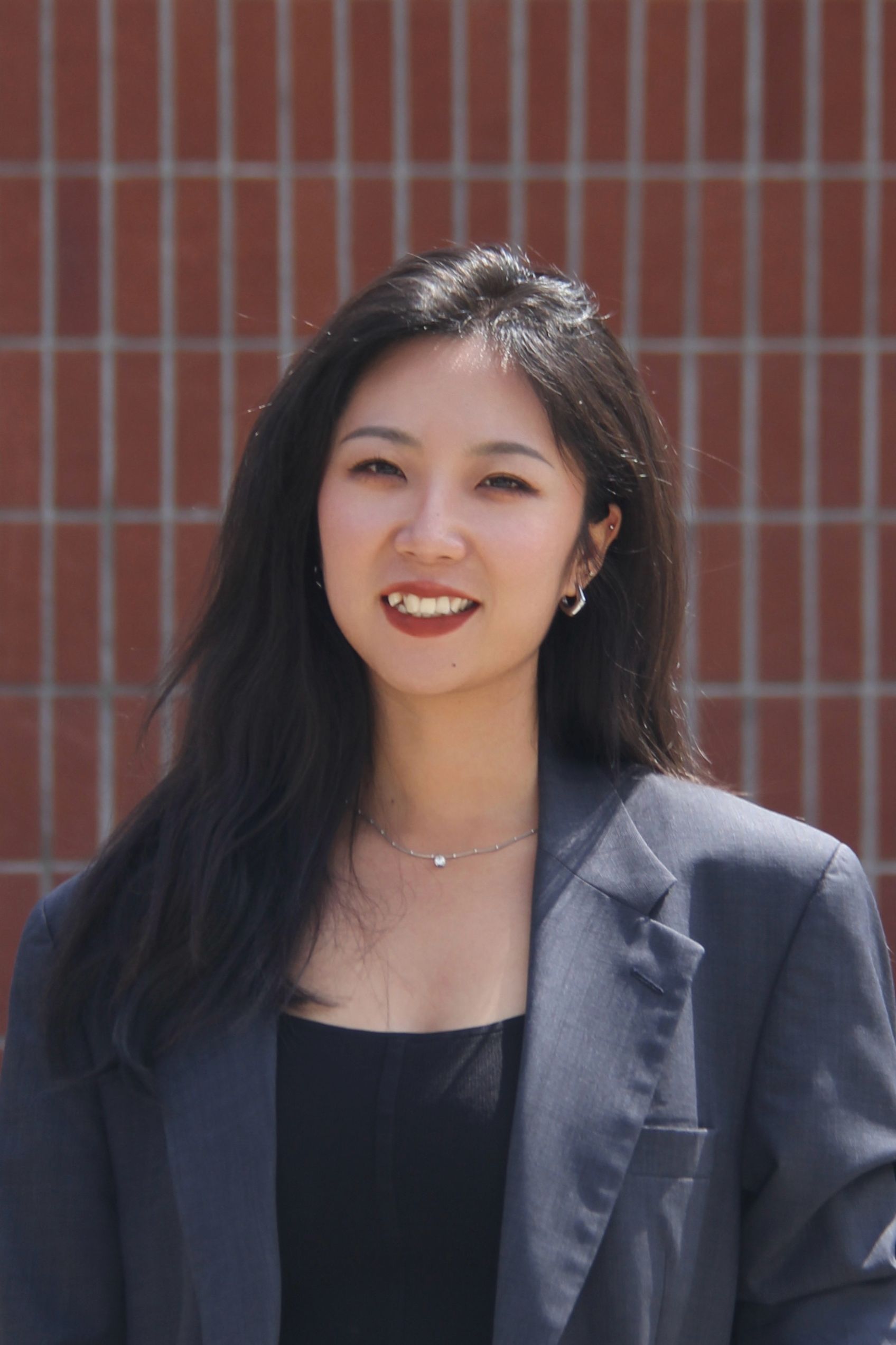Amy
Childress Group

Weijian Ding
Novel method development for quantifying real-time compaction of water treatment membranes
Membranes play critical roles in seawater desalination, wastewater treatment, potable water reuse, and resource recovery. Their performance can be adversely affected by compaction, which can limit their practical use and durability. Compaction is particularly important for high pressure (e.g., high-salinity and/or high-recovery) applications. While previous studies have employed scanning electron microscopy to measure thickness before and after compaction, real-time compaction measurement has not been possible.
Weijian introduces a novel method to characterize membrane compaction using a newly developed capability of real-time measurement by combining electrical impedance spectroscopy with dynamic mechanical analysis. The novel method was developed for low-pressure thin-film materials and shows promise for detecting and predicting the performance and fatigue of water treatment membranes in various applications.
Weijian is currently working on extending the application of this novel measurement method to advanced conditions (e.g., under higher pressure, in wet testing conditions), to quantify real-time compaction of water treatment membranes used for ultra-filtration, nano-filtration, and reverse osmosis.

Shounak G. Joshi
Childress Research Group
B Tech – Food Engineering & Technology (2016), Institute of Chemical Technology, Mumbai
MS – Environmental Engineering (2017), Carnegie Mellon University
Membrane distillation is a competitive process for treating challenging high-salinity streams. Membrane distillation can achieve high rejection and recovery at low pressures and with lower fouling rates as long as membrane wetting-resistance is maintained. Especially when treating high-salinity brines, maintaining wetting resistance is a key challenge.
Shounak’s past work focused on characterizing the wetting front and liquid progression through membrane distillation membranes in real-time using electrochemical impedance spectroscopy. Now after learning that changes in the thickness of the airgap across membranes measured by electrochemical impedance spectroscopy are due to both wetting front progression and membrane compaction, his goal is to use short- and long-term MD experiments to distinguish between impedance change due to wetting progression from that due to compaction. His ultimate goal is to develop mechanistic understanding of both wetting resistance and wettability of membranes used in water treatment.

Bana Dahdah
Childress Research Group
MEng – Civil Engineering (2015), University of Manchester
MS – Environmental Engineering (2023), University of Southern California
Conceptual analyses on synergistic integration of potable reuse and desalination systems for flexible and reliable water supplies
Development of new potable water supplies continues to be a worldwide challenge in the twenty-first century. Through conceptual analyses focused on providing local long-term reliable water supplies that are resilient to climate-induced impacts, Bana hopes to provide solutions to the growing demands and supply shortages of potable water.
In her first conceptual analysis, Bana studied the feasibility of augmenting ocean water desalination with potable reuse as means to increase potable water supplies using local resources and shared infrastructure. Ocean raw water augmentation, ocean treated water augmentation, and integrated facility approaches were introduced and compared to desalination of ocean water in terms of cost and environmental impacts.
Bana is currently studying the feasibility of seawater-augmented potable reuse at coastal potable reuse facilities. With increasing salinity levels being found in wastewater, this novel concept suggests the transition from unplanned (de facto) seawater desalination to intentional desalination of seawater at potable reuse facilities. A closed-circuit reverse osmosis configuration is being simulated because of its operational flexibility in desalinating feedwaters over a wide range of salinity. This conceptual analysis is intended to illustrate the possibility of designing a potable reuse facility not only for flexibility in water quality, but also for flexibility in capacity.

Martijn Bindels
Childress Research Group
BS – Mechanical Engineering (2016), Zuyd University of Applied Sciences
MS – Electromechanical Engineering (2019), KU Leuven
MS – Mechanical Engineering (2021), KU Leuven
MS – Environmental Engineering (2024), University of Southern California
Understanding salinity cycling in high recovery desalination systems
Two ways to relieve water stress is to provide water from untapped sources like reclaimed water and to increase the permeate production of existing plants. Increasing the permeate production can lead to operating at higher salinities and recoveries, which is challenging.
Pushing the recovery of desalination systems is difficult due to the increasing osmotic pressures and the resulting scaling increases the energy consumption or can lead to failure of the process. Running at high salinities (>100 g/l) with conventional steady state reverse osmosis will result in process failure due to scaling. New dynamic processes have been proposed which employ salinity cycling to break or redissolve scaling, but the processes involved are not well understood.
Through Martijn’s industrial and academic experience in high salinity applications and dynamic processes, he aims to understand the effect of the salinity cycling on the scaling process. This understanding can lead to the improvement of existing processes, identification of new applications for high recovery desalination systems, and usage of previously untapped water resources.

Kexin (Kathy) Ma
Childress Research Group
BS – Civil Engineering (2019), Xi’an University of Architecture and Technology
MS – Environmental Engineering (2023), University of Southern California
Quantifying real-time compaction of biofilms
Thin-film materials that are characterized by one dimension (the thickness) being significantly smaller than the other two dimensions play critical roles in applications pertaining to water treatment, power generation and storage, medicine, and electronics. For example, in wastewater treatment, membrane bioreactors depend on thin films like membranes and biofilms.
Compaction can occur instantly or over longer time periods and, depending on the recovery properties of the biofilms, can cause irreversible, partially reversible, or reversible changes in thin-film morphology and mechanical properties. Thin-film membrane compaction changes the internal structure by swelling, twinning, and kinking the polymer chains, which limits their practical use and durability and decreases their performance.
Kathy is characterizing real-time compaction of biofilms in water purification under a range of conditions using on a novel method developed by our team.

Haotian Cai

Leading innovating water solutions, uniting research and education for a sustainable and secure future.
MENU
| Developed with Passion by Outcreate
Lab Group: McCurry Research Group
Previous Degrees:
BS – Environmental Science (2019), Anhui University
BS — Environmental Health (2019), Colorado State University
MS – Environmental Engineering (2021), Northwestern University
Current ERDC research project title
Saturated hydrocarbons amine chlorination to nitroalkanes.
Brief synopsis of project
Due to water resource scarcity, water reuse become a hot topic. Water reuse involves the disinfection of water containing organic nitrogen, which forms DBPs. Previous studies show the high toxicity of N-DBPs, which are not regulated yet. Although the ozonation of amines to nitro compounds is observed, the chlorination process is unknown. This project focuses on the direct observation and mechanism of chlorination of amines to nitro compounds.

Marella Schammel

Leading innovating water solutions, uniting research and education for a sustainable and secure future.
MENU
| Developed with Passion by Outcreate
Lab Group: McCurry Research Group
Previous Degrees
BS – Chemistry (2020), Towson University
MS – Environmental Engineering (2022), University of Southern California
Current ERDC research project title
Development of a new mass spectrometry-based total organic chlorine analytical method to assess the safety of the UV/chlorine advanced oxidation process
Brief synopsis of project
Advanced oxidation processes are an important step in removal of trace organic contaminants during water treatment. UV/chlorine is one such method recently implemented, however the potential of this method to method to produce unknown chlorinated byproducts has not yet been evaluated (as focus has primarily been on regulated and monitored byproducts). We hypothesize that the chlorine radical produced during UV/chlorination incorporates into the bulk dissolved organic matter. forming chlorinated byproducts. To measure bulk chlorine incorporation, an analytical method to measure total organic chlorine (TOCl) will be developed. While methods to measure TOCl exist, they are typically labor intensive and result in poor detection limits. This work seeks to develop a TOCl method using inductively coupled plasma-mass spectrometry (ICP-MS) that requires minimal sample preparation and yields low detection limits to evaluate the incorporation of chlorine into bulk DOM (and therefore production of unknown chlorinated byproducts) during UV/chlorination.

Xiao Yang

Leading innovating water solutions, uniting research and education for a sustainable and secure future.
MENU
| Developed with Passion by Outcreate
Lab Group: McCurry Research Group
Previous Degrees
BEng – Water Supply and Drainage Engineering (2022), Huazhong University of Science and Technology
Current ERDC research project title
Using probe compounds to measure aldehyde’s reaction constants with •OH and Cl• under UV light
Brief synopsis of project
In this study, Xiao utilizes competition kinetics theory to determine reaction rate constants of aldehydes with •OH and Cl•, respectively. Since aldehydes will be of increasing importance as regulation potable reuse gains more legislative and industrial attention. This project aims to assess chlorine-UV system’s potency in degrading different aldehydes, which will be regulated in the future. Also, Xiao hopes to acquire valuable rate constants that are irreplaceable for reactor design of treatment plants which need to meet future regulatory standards.
